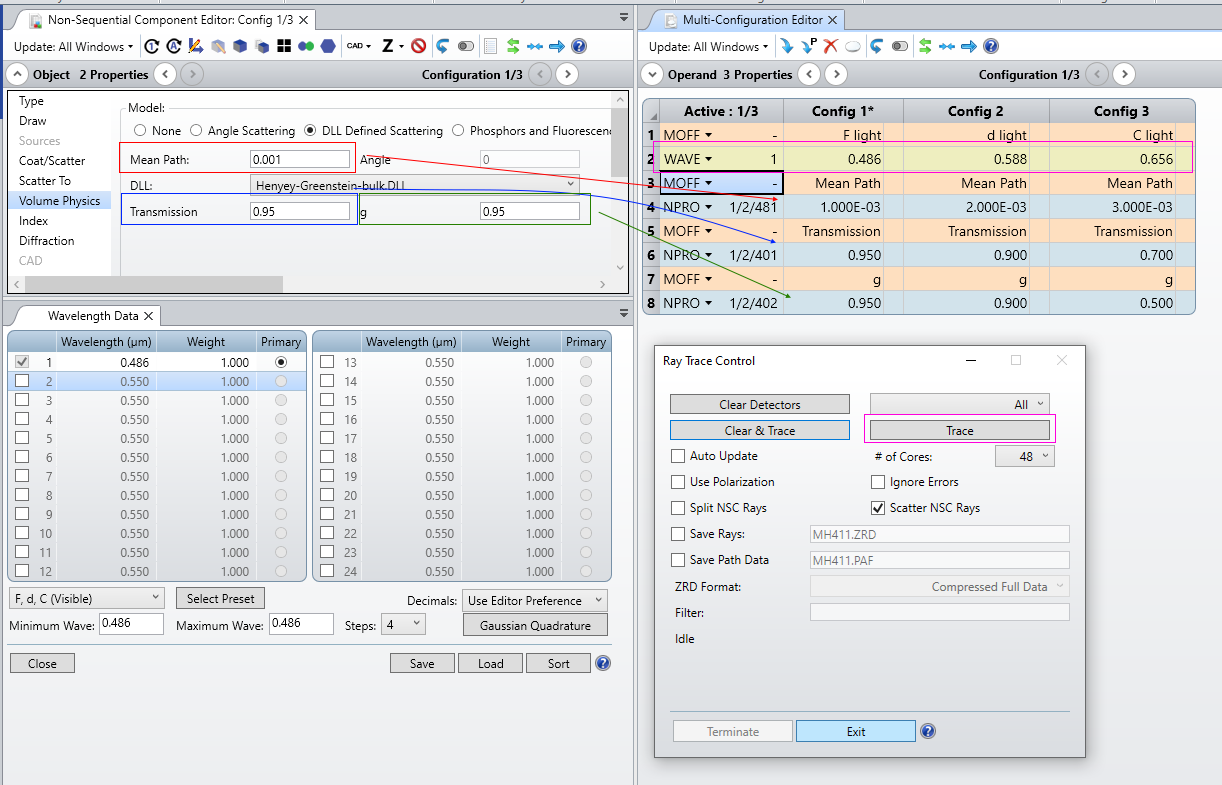Hi,
Henyey-Greenstein model describes the angular distribution of light scattered by small particles, ranging from the scattering of light by biological tissue to scattering by interstellar dust clouds [https://support.zemax.com/hc/en-us/articles/1500005577062-Using-the-Henyey-Greenstein-distribution-to-model-bulk-scattering].
Will it be right to use Henyey-Greenstein distribution in Non-Sequential Mode to model bulk scattering due to raindrops and snowflakes?
Thank you for the reply!
[Mod note: Moved to general forum as this is not a STAR-related question].






